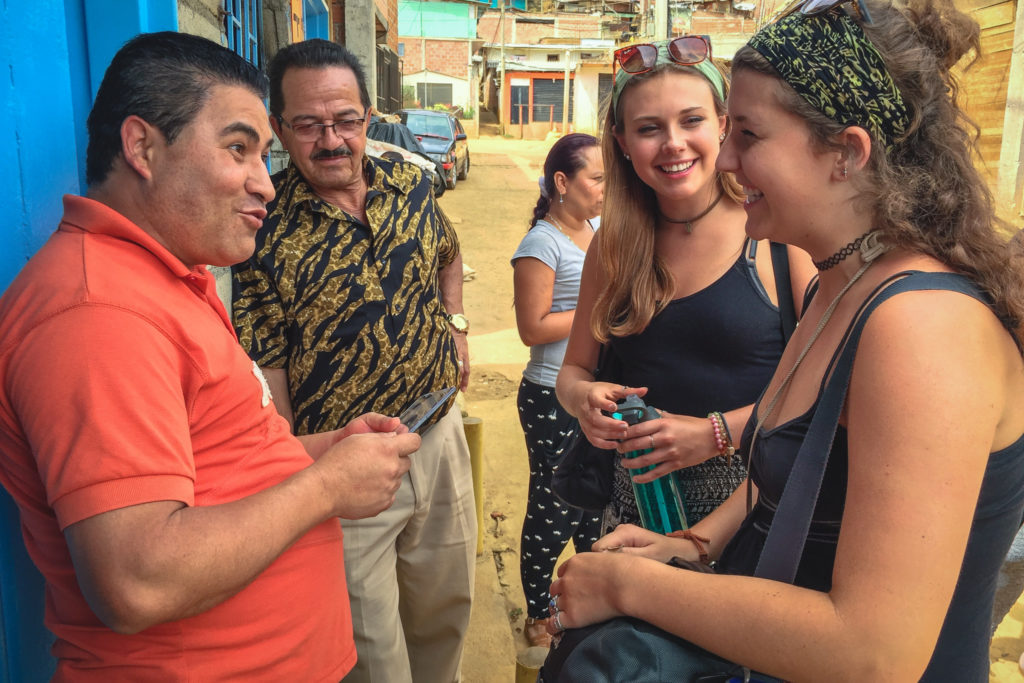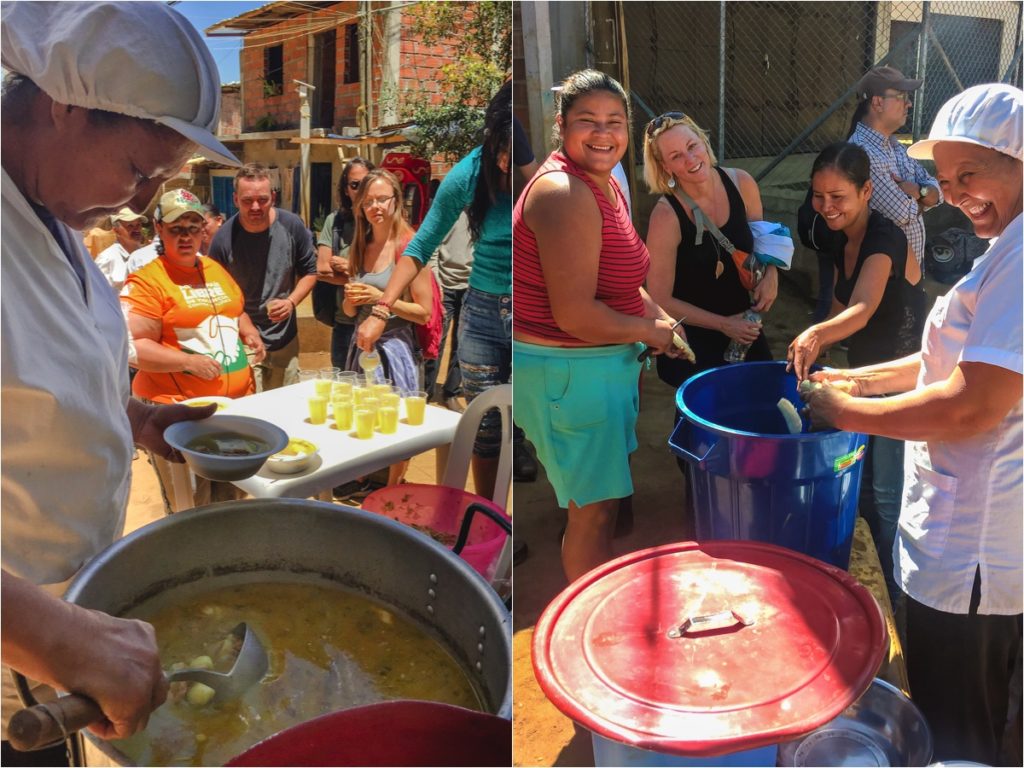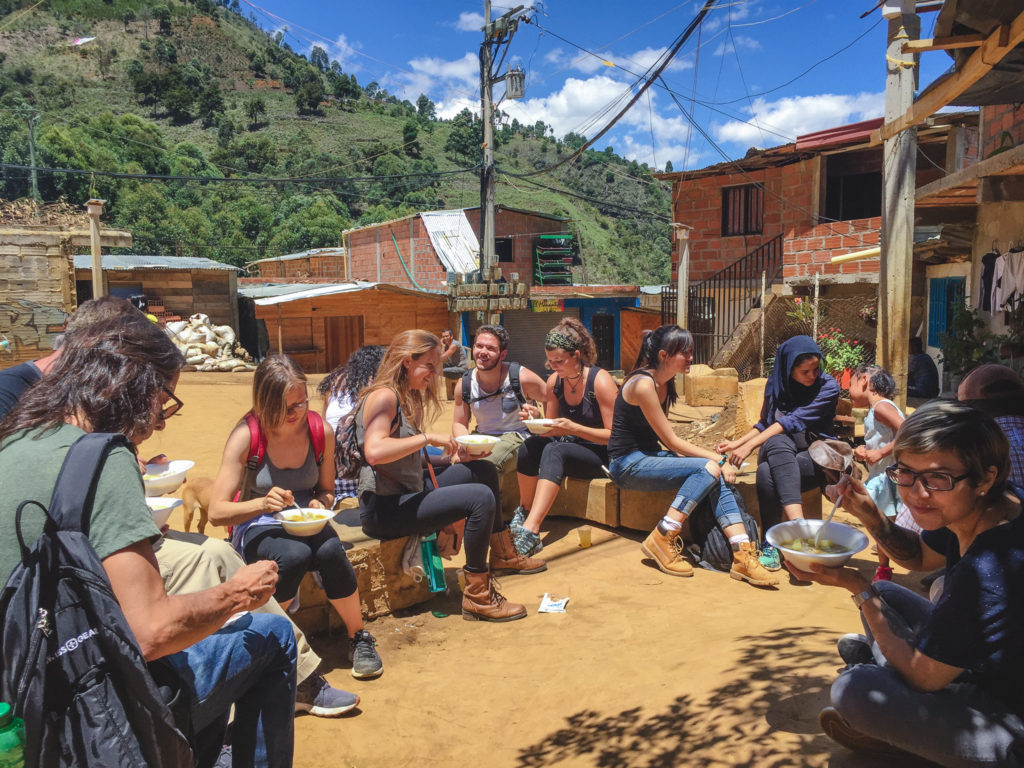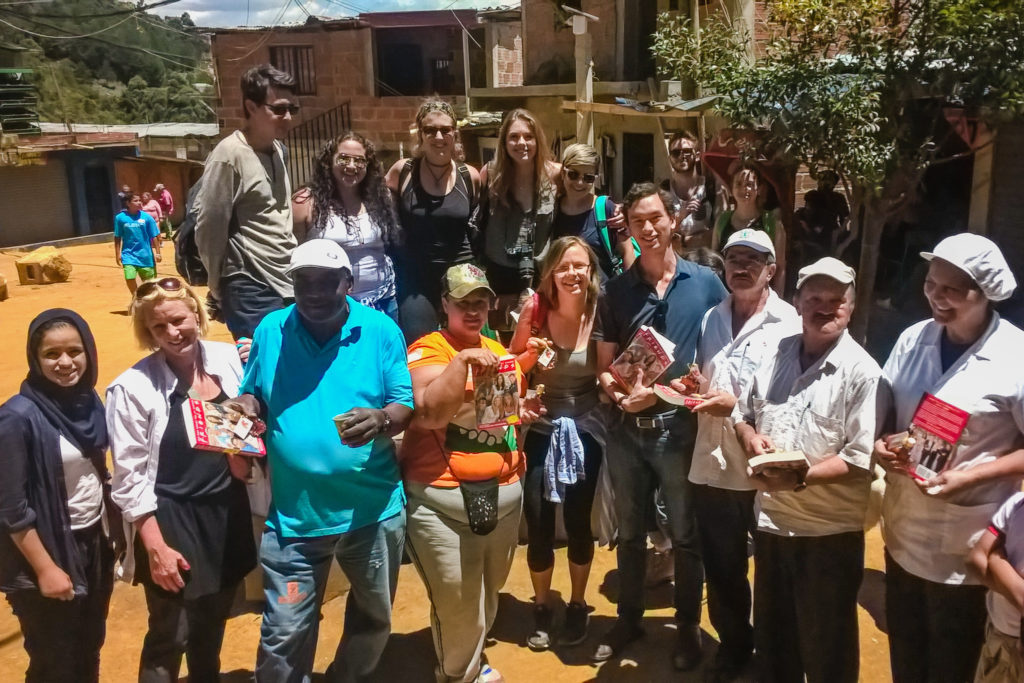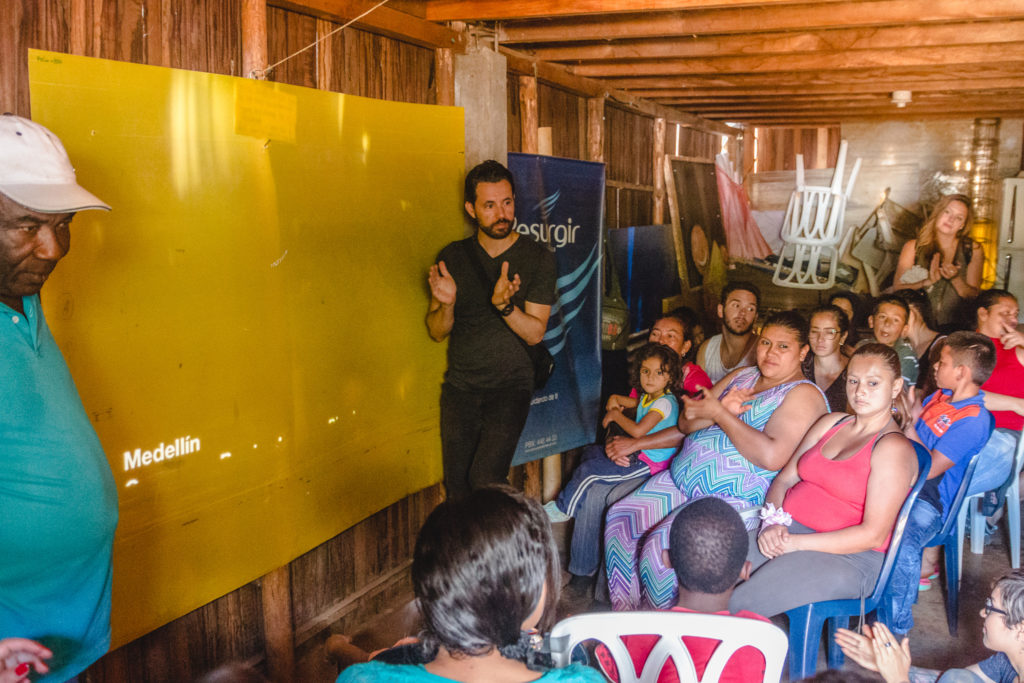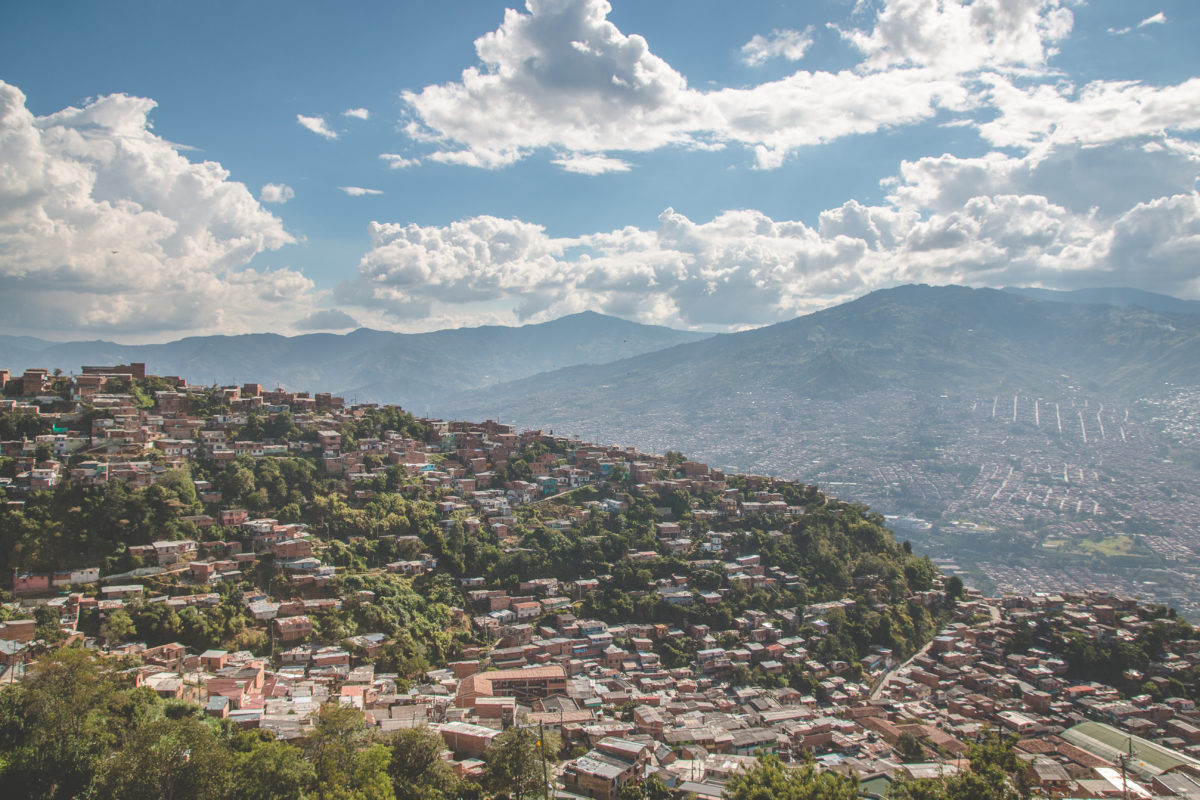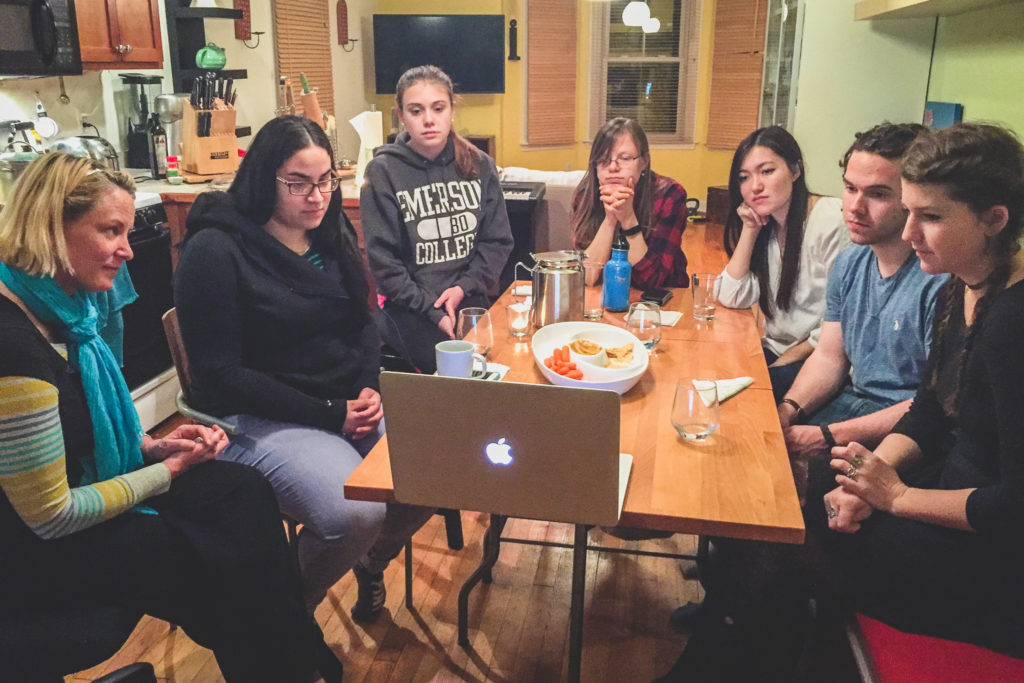The images of our filming process with Manantiales de Paz that linger most in my mind are those in which the equipment fades away and pure humanity comes into sharp focus. Moments like when, after a long day of interviewing, the group settled into Doña Ena’s house to be refreshed by her signature juices and soulful smile, and worked side by side, laptop alongside blender. When shooting was paused as community leaders descended on Claudia’s one-year-old house for a bandeja paisa lunch that had been cooking since 4 a.m., followed by students Suzie and Evie singing “Rolling in the Deep” with Claudia’s daughter Veronica. When Gloria, another community leader, told her life story of displacement, loss, and unimaginable resolve for the first time, ever, and there was nothing more to do but cry with her.
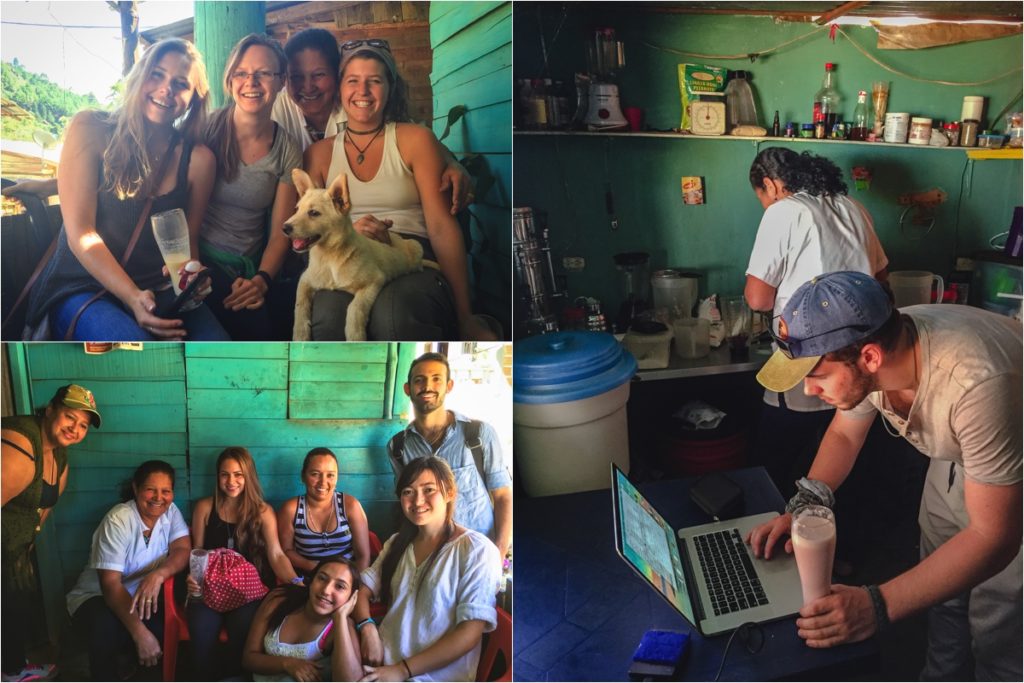
Those encounters, far from being vivid but superfluous memories, were intrinsic to our documentary process. Those simple interactions, organic and unforced, showed that we see each other as more than just sources and distributors of stories—important roles, to be sure, but we had the privileged opportunity to go a step further and create deeper connections. In the end, those moments, unmediated by a camera lens and microphone, were precisely what built trust between our students and Manantiales de Paz residents—trust that was necessary to capture the compelling cinematic interviews we now have.
“When you’re completely focused on one person, when you share their tears because you’re hearing an incredible story, then the interview works,” Patricio Guzmán, the Chilean documentary filmmaker, said in Capturing Reality. “An interview is a fundamental exchange about life.”

Getting closer to our documentary partners also exposes some of the most profound complexities of work like this; central among them is mobility. Most of our community partners in Manantiales de Paz are desplazados and desplazadas, internally displaced due to over five decades of violence in Colombia. They had been forced to flee their hometowns from across the country, often with only minutes to grab their kids and a few belongings; many were uprooted several times before settling, for now, in Manantiales de Paz.
Yet in a “tragic irony, while they are the most ‘mobile’ people in Medellín—having moved from their hometowns to another one foreign to them—desplazadas have the least mobility to circulate their stories … in citywide, national, and global arenas,” Global Pathways and Mobility Movilidad co-director Tamera Marko writes in “Disrupting Doble Desplazamiento in Conflict Zones.”
She continues: “Among all of our archive’s collaborating participants, the desplazadas have the most intimate and violent relationship to the conflict in Colombia, take the most risk in telling their stories about it, and receive the least rewards for doing so.”

Tam, our students, and I have a different and more privileged mobility. We leave Manantiales de Paz once we finish filming every day; we leave Colombia once our program concludes in the summer. We also have the resources to record the stories we hear in Manantiales de Paz, bring them with us down the mountain and across the ocean, and share them with myriad audiences. Receiving their stories requires us to risk very little, and publishing them almost automatically opens the door for us to receive social, academic, and economic rewards.
Our approach is to face this inequity with humility and humanity. We recognize that our partners and friends in Manantiales de Paz have a lot to teach us about living with dignity, resilience, and peace while confronting some of the world’s most pressing challenges. And we have a lot to offer by channeling our resources to circulate their stories, particularly by reframing the way we think about the documentary process to more closely include the storytellers themselves, as Tam details in “Disrupting Doble Desplazamiento.”
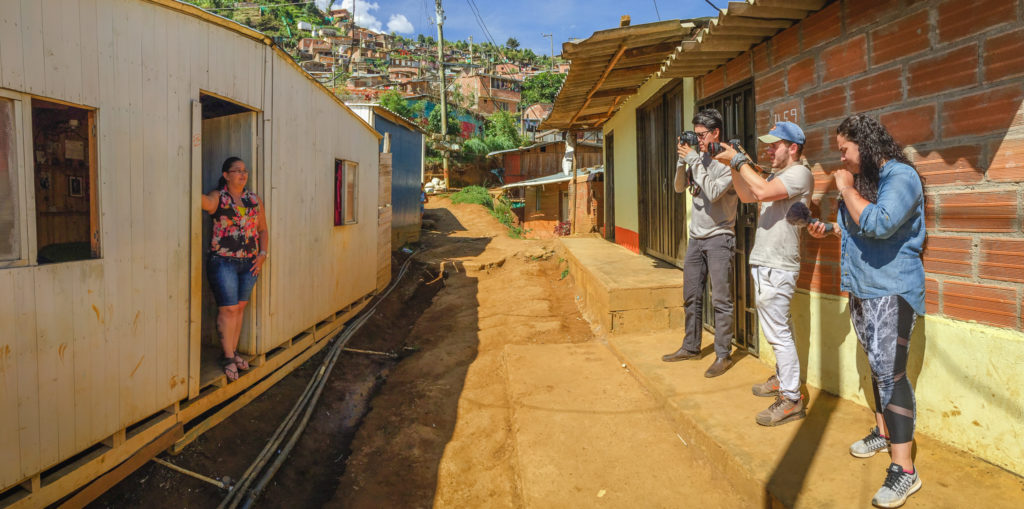
Most fundamentally, we focus on building relationships. This means starting our work by sharing sancocho, a traditional Latin American stew and vessel for community integration. It means enjoying impromptu serenades from community leader Don Roque and original ranchera music by Don Álvaro. And it means, over two weeks, being invited into dozens of community members’ homes to hear some of their most brutal and intimate stories, each visit inevitably ending with a hug, a blessing, and a sincere wish that “we hope you come back.”
